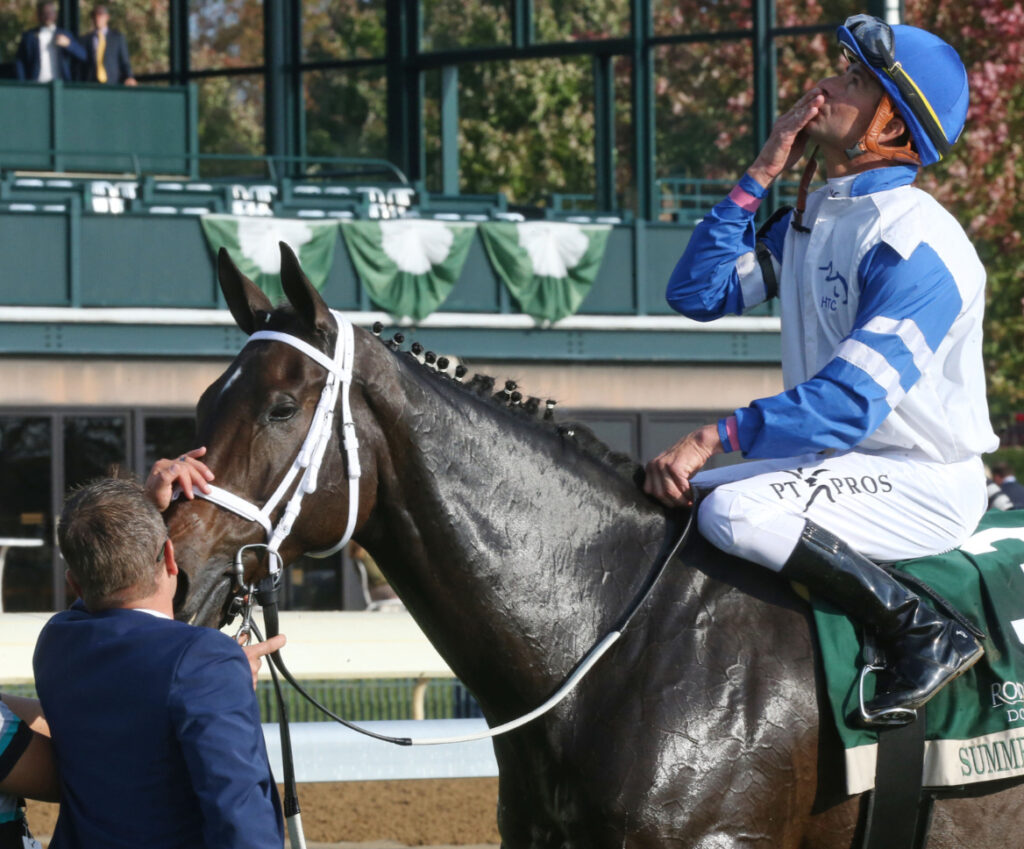The reason most racehorse investors struggle to breed or buy winners is because they lack effective strategies to get them laser-focused.
This happens because most racehorse investors don’t use proven pedigree analysis templates. Without these templates, they rely on guesswork, leading to subpar performance and financial losses.
Which is why understanding and applying these key templates is essential.
We’re going to walk you through:
- Female Family Numbers
- Outcross Percentage Formulation
- Duplicate Count Comparison
- Gen II Balance
- Grand Sire/Grand Dam Pair Percentages
- Dosage Theory
- Gender-Balanced Linebreeding
Learning how to use these templates will help you enhance your breeding and buying strategies, increase your chances of producing superior racehorses and gain deeper insights into the art and science of pedigree analysis. This will ultimately lead to more successful investments and prestigious wins for racehorse investors.
Let’s dive into the first template.
Female Family Numbers
Female family numbers identify and emphasize the importance of the maternal lineage in a pedigree.
They highlight the historical success of specific female lines, which can predict future performance. By leveraging strong female family lines, breeders and buyers can increase the likelihood of producing superior racehorses. However, ignoring the impact of female family lines can lead to underperforming offspring.
To implement this, prioritize mares with proven successful female family numbers in their pedigree. Emphasizing female family numbers can significantly enhance breeding outcomes by leveraging historically successful maternal lines.
Next, we’ll discuss outcross percentage formulation.
Outcross Percentage Formulation
Outcross percentage formulation measures the genetic diversity within a pedigree.
It helps ensure genetic health and reduces the risk of hereditary issues. Higher outcross percentages can lead to healthier and more robust offspring, while breeding horses with low outcross percentages can increase the risk of genetic defects.
Aim for an outcross percentage of at least 70% in your breeding plans. Maintaining a high outcross percentage is crucial for producing genetically healthy and successful racehorses.
Now, let’s move on to duplicate count comparison.
Duplicate Count Comparison
Duplicate count comparison evaluates the balance of duplicated ancestors on both sides of the pedigree.
This helps achieve a balanced genetic profile, enhancing performance. Balanced duplication can lead to better physical and performance traits in the offspring. Conversely, excessive duplication on one side of the pedigree can result in imbalanced traits.
Ensure the number of duplicated ancestors is evenly distributed between the sire and dam lines. Balanced duplication in pedigrees is essential for creating well-rounded and high-performing racehorses.
Up next is Gen II balance.
Gen II Balance
Gen II balance measures the genetic influence of the second-generation ancestors.
It ensures that no single grandparent dominates the genetic makeup of the foal. A balanced Gen II profile can lead to more consistent and predictable performance. An imbalanced Gen II profile, however, can skew the genetic traits unfavorably.
Strive for a Gen II balance as close to zero as possible for optimal results. Achieving Gen II balance is crucial for producing racehorses with consistent and favorable traits.
Next, we’ll explore grand sire/grand dam pair percentages.
Grand Sire/Grand Dam Pair Percentages
Grand sire/grand dam pair percentages evaluate the genetic contributions from the grandparents.
Understanding these contributions can help predict the foal’s performance traits. Balanced contributions from all grandparents can enhance the foal’s genetic potential. Neglecting the influence of any grandparent can result in uneven traits.
Ensure that the grand sire/grand dam pair percentages are balanced for optimal genetic diversity. Balanced genetic contributions from all grandparents are key to breeding superior racehorses.
Let’s discuss dosage theory next.
Dosage Theory
Dosage theory categorizes a horse’s ancestors based on their influence on speed and stamina.
It provides insights into the potential racing aptitude of the offspring. Understanding dosage can help predict the optimal racing distance and performance potential of the foal. Ignoring the dosage profile can lead to mismatched performance expectations.
Use the dosage profile to match mares and stallions that complement each other’s strengths in speed and stamina. Utilizing dosage theory can help tailor matings to produce racehorses with optimal performance characteristics.
Finally, we’ll cover gender-balanced linebreeding.
Gender-Balanced Linebreeding
Gender-balanced linebreeding focuses on combining linebreeding with equal gender representation from those duplicated individuals.
It strengthens desirable traits while maintaining genetic balance. This method can enhance specific performance traits and overall genetic health. Excessive linebreeding without gender balance, however, can lead to negative genetic outcomes.
Combine linebreeding practices with gender balancing for optimal results. Gender-balanced linebreeding effectively enhances desirable traits while maintaining genetic health.
By applying these seven key templates, racehorse investors can significantly improve their breeding strategies and increase their chances of producing winning racehorses.

